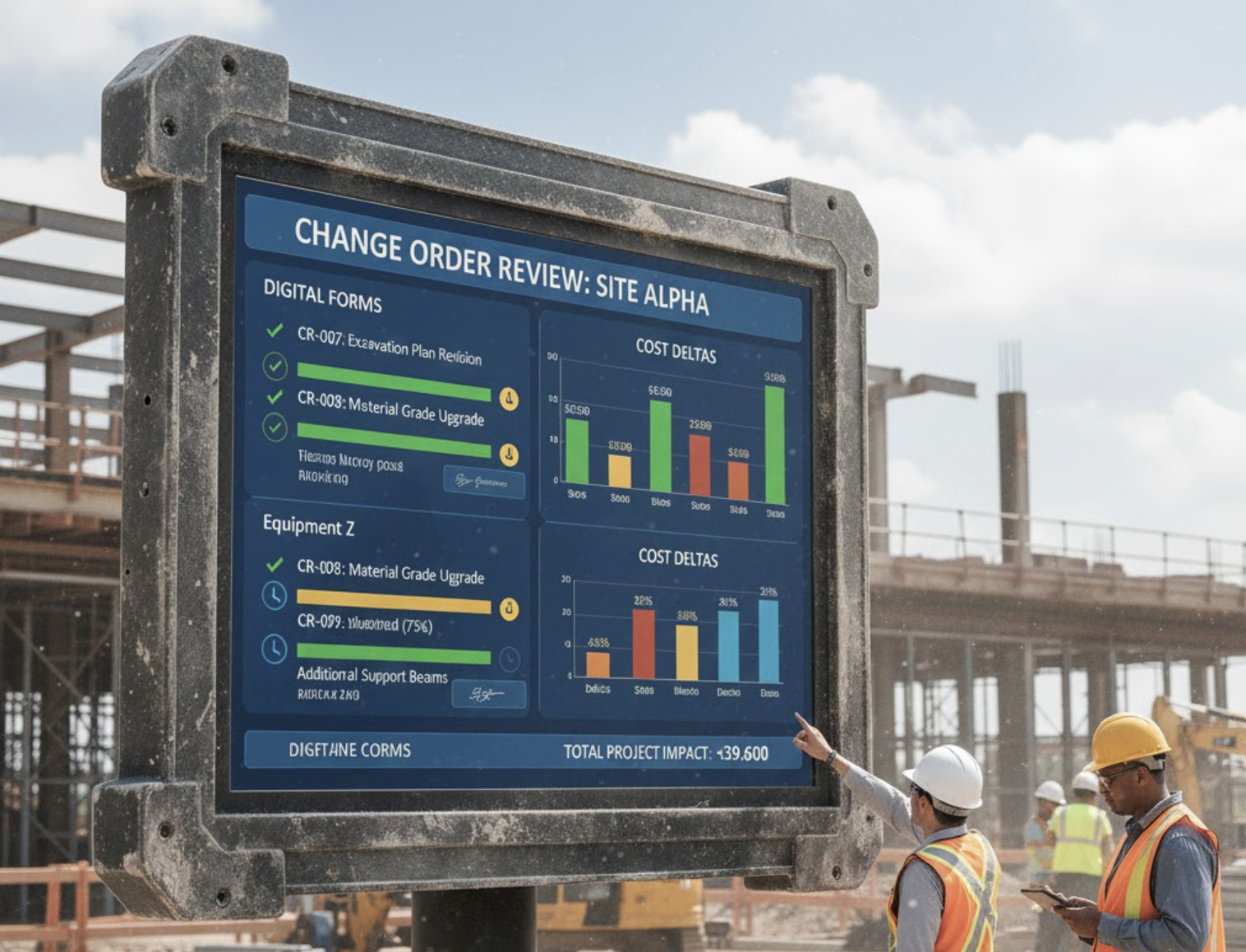How a Digital Audit Trail Helps with Authority Submissions
A digital audit trail is crucial for organizations, especially in construction, where authority submissions are routine yet fraught with challenges. These submissions, encompassing plans, permits, and reports, must not only demonstrate compliance but also be accurate, comprehensive, and traceable. In this digital age, leveraging a robust audit trail can significantly streamline this complex process. In this article, we will explore the key benefits of a digital audit trail, its applications in construction, best practices, and how Zepth provides a powerful solution for effective authority submissions.
Key Benefits of a Digital Audit Trail
Incorporating a digital audit trail into the construction workflow offers several advantages that enhance compliance and project management efforts:
1. Ensuring Compliance and Regulatory Adherence
Compliance is non-negotiable in industries governed by stringent regulations, such as construction. A digital audit trail meticulously records every step throughout the project lifecycle, ensuring all policies and requirements are adhered to. This systematic tracking serves as verifiable proof during inspections and audits, mitigating the risk of penalties or rejected submissions. With the regulatory landscape constantly evolving, having easily accessible and up-to-date documentation is invaluable, particularly under laws like FDA 21 CFR Part 11.
2. Accountability and Transparency
Accountability in construction projects can be enhanced significantly through the implementation of an audit trail. Each document interaction is time-stamped and attributed to the specific user responsible for the action, simplifying the tracking of responsibilities and approvals. This level of transparency discourages unauthorized alterations and fosters trust among stakeholders and regulatory bodies. By ensuring all changes to submission documents are logged and reviewable, accountability is further strengthened.
3. Error and Fraud Detection
One of the most critical aspects of maintaining the integrity of authority submissions is error and fraud detection. A comprehensive audit trail enables quick identification of anomalies, unauthorized access, or dubious activity surrounding documents. This helps reduce the risk of errors, financial misappropriation, and data tampering. Additionally, clear documentation histories can support dispute resolution efforts and investigations.
4. Streamlined Audits and Efficient Reporting
The benefits of a digital audit trail extend to auditing and reporting as well. Quick retrieval of documentation necessary for regulatory evaluations enhances the speed and reduces the resource burden associated with audits. By eliminating the chaos of searching through paper records or disorganized digital files, teams can focus their efforts on project execution rather than administrative tasks. Everything becomes searchable and organized, streamlining the overall compliance process.
5. Data Integrity and Legal Protection
Maintaining data integrity is vital. A digital audit trail ensures accuracy and completeness in the information submitted to authorities, reducing the likelihood of errors during submission. In the event of legal challenges or disputes, having a comprehensive, defensible position showcasing diligent record-keeping becomes invaluable, thereby minimizing potential legal liabilities related to data privacy.
6. Operational Efficiency
Automation capabilities in capturing and organizing audit trails indicate a significant improvement in operational efficiency. This automated process saves vast amounts of time and effort compared to manual tracking. Additionally, a proactive identification of process bottlenecks and compliance risks promotes continuous improvement. Insights gained from audit trail analytics can inform optimized workflows and boost overall team productivity, especially when preparing for authority submissions.
Use Cases in Construction
Digital audit trails can be applied in various scenarios within the construction industry, providing concrete examples of how they improve submission processes:
- Permit and Plan Approvals: Documenting every iteration and approval helps avoid delays stemming from incomplete or missing records.
- Change Order Tracking: Having a transparent history of all project adjustments and justifications aids in both compliance and the avoidance of disputes.
- Inspection and Certification Submissions: Recording actions related to safety inspections or quality certifications makes regulatory reviews traceable and defensible.
Best Practices for Implementing Digital Audit Trails
To maximize the efficiency and reliability of a digital audit trail, consider the following best practices:
- Centralize Documentation: Utilize a unified platform to manage all project records, ensuring consistency and minimizing errors.
- Automate Tracking: Employ tools that automatically log every action to prevent human error from causing oversight.
- Regular Review: Schedule periodic audits of the audit trail data to identify potential risks or compliance gaps early.
- Access Controls: Restrict and monitor who can access or amend sensitive documents, further preventing tampering.
Emerging Innovations in Digital Audit Trails
The construction industry is witnessing emerging innovations that are revolutionizing the functionality of audit trails:
- Integration with IoT: Facilitating continuous compliance monitoring, IoT devices can feed real-time data into audit trails.
- AI-Powered Analysis: Advanced AI can proactively flag anomalies, automate compliance checks, and anticipate possible issues before they escalate.
- Cloud-Based Mobile Platforms: Enabling on-site documentation audits and updates speeds up authority submissions and responses.
How Zepth Helps Construction Teams
At Zepth, we recognize the importance of a solid digital audit trail in streamlining authority submissions. Our platform offers various tools that enhance the effectiveness of audit trails:
- Digital Audit Trail Platform: Zepth provides robust audit trail features that log every document action, ensuring full traceability for all authority submissions.
- Risk Management Module: This module proactively identifies and manages compliance risks, seamlessly integrating with audit trails to enhance overall project governance. Learn more about our Risk Management Module.
- Document Register: Our centralized document storage simplifies document management, ensuring easy retrieval of records for audits. Explore our Document Register.
- Automated Compliance Workflows: Zepth automates tedious processes, reducing manual effort and minimizing the risk of oversight.
- Fraud and Error Detection: Built-in controls flag unauthorized or suspicious actions, increasing accountability throughout the project lifecycle.
- Insightful Analytics: Zepth’s reporting features enable teams to analyze workflow efficiencies, identify bottlenecks, and continuously enhance submission processes.
- Supports Internal Collaboration: Providing transparency and version control, Zepth enhances cross-team accountability and streamlines communication.
In conclusion, adopting a digital audit trail not only safeguards construction management teams from compliance risks but also promotes greater efficiency, transparency, and trust in the authority submission process. Zepth’s comprehensive suite of features is specifically designed to deliver these benefits at every project stage.




